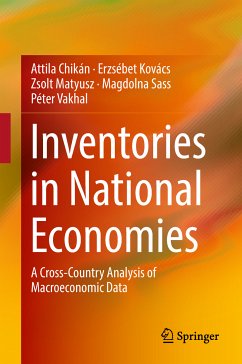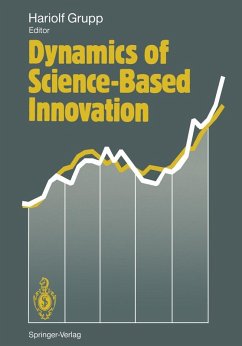
Investment Decisions and the Logic of Valuation (eBook, PDF)
Linking Finance, Accounting, and Engineering
Versandkostenfrei!
Sofort per Download lieferbar
60,95 €
inkl. MwSt.
Weitere Ausgaben:

PAYBACK Punkte
30 °P sammeln!
This book presents a new approach to the valuation of capital asset investments and investment decision-making. Starting from simple premises and working logically through three basic elements (capital, income, and cash flow), it guides readers on an interdisciplinary journey through the subtleties of accounting and finance, explaining how to correctly measure a project's economic profitability and efficiency, how to assess the impact of investment policy and financing policy on shareholder value creation, and how to design reliable, transparent, and logically consistent financial models.The b...
This book presents a new approach to the valuation of capital asset investments and investment decision-making. Starting from simple premises and working logically through three basic elements (capital, income, and cash flow), it guides readers on an interdisciplinary journey through the subtleties of accounting and finance, explaining how to correctly measure a project's economic profitability and efficiency, how to assess the impact of investment policy and financing policy on shareholder value creation, and how to design reliable, transparent, and logically consistent financial models.
The book adopts an innovative pedagogical approach, based on a newly developed accounting-and-finance-engineering system, to help readers gain a deeper understanding of the accounting and financial magnitudes, learn about new analytical tools, and develop the necessary skills to practically implement them. This diverse approach to capital budgeting allows a sophisticated economic analysis in both absolute terms (values) and relative terms (rates of return), and is applicable to a wide range of economic entities, including real assets and financial assets, engineering designs and manufacturing schemes, corporate-financed and project-financed transactions, privately-owned projects and public investments, individual projects and firms.
As such, this book is a valuable resource for a broad audience, including scholars and researchers, industry practitioners, executives, and managers, as well as students of corporate finance, managerial finance, engineering economics, financial management, management accounting, operations research, and financial mathematics.
It features more than 180 guided examples, 50 charts and figures and over 160 explanatory tables that help readers grasp the new concepts and tools. Each chapter starts with an abstract and a list of the skills readers can expect to gain, and concludes with a list of key points summarizing the content.
The book adopts an innovative pedagogical approach, based on a newly developed accounting-and-finance-engineering system, to help readers gain a deeper understanding of the accounting and financial magnitudes, learn about new analytical tools, and develop the necessary skills to practically implement them. This diverse approach to capital budgeting allows a sophisticated economic analysis in both absolute terms (values) and relative terms (rates of return), and is applicable to a wide range of economic entities, including real assets and financial assets, engineering designs and manufacturing schemes, corporate-financed and project-financed transactions, privately-owned projects and public investments, individual projects and firms.
As such, this book is a valuable resource for a broad audience, including scholars and researchers, industry practitioners, executives, and managers, as well as students of corporate finance, managerial finance, engineering economics, financial management, management accounting, operations research, and financial mathematics.
It features more than 180 guided examples, 50 charts and figures and over 160 explanatory tables that help readers grasp the new concepts and tools. Each chapter starts with an abstract and a list of the skills readers can expect to gain, and concludes with a list of key points summarizing the content.
Dieser Download kann aus rechtlichen Gründen nur mit Rechnungsadresse in A, B, BG, CY, CZ, D, DK, EW, E, FIN, F, GR, HR, H, IRL, I, LT, L, LR, M, NL, PL, P, R, S, SLO, SK ausgeliefert werden.












